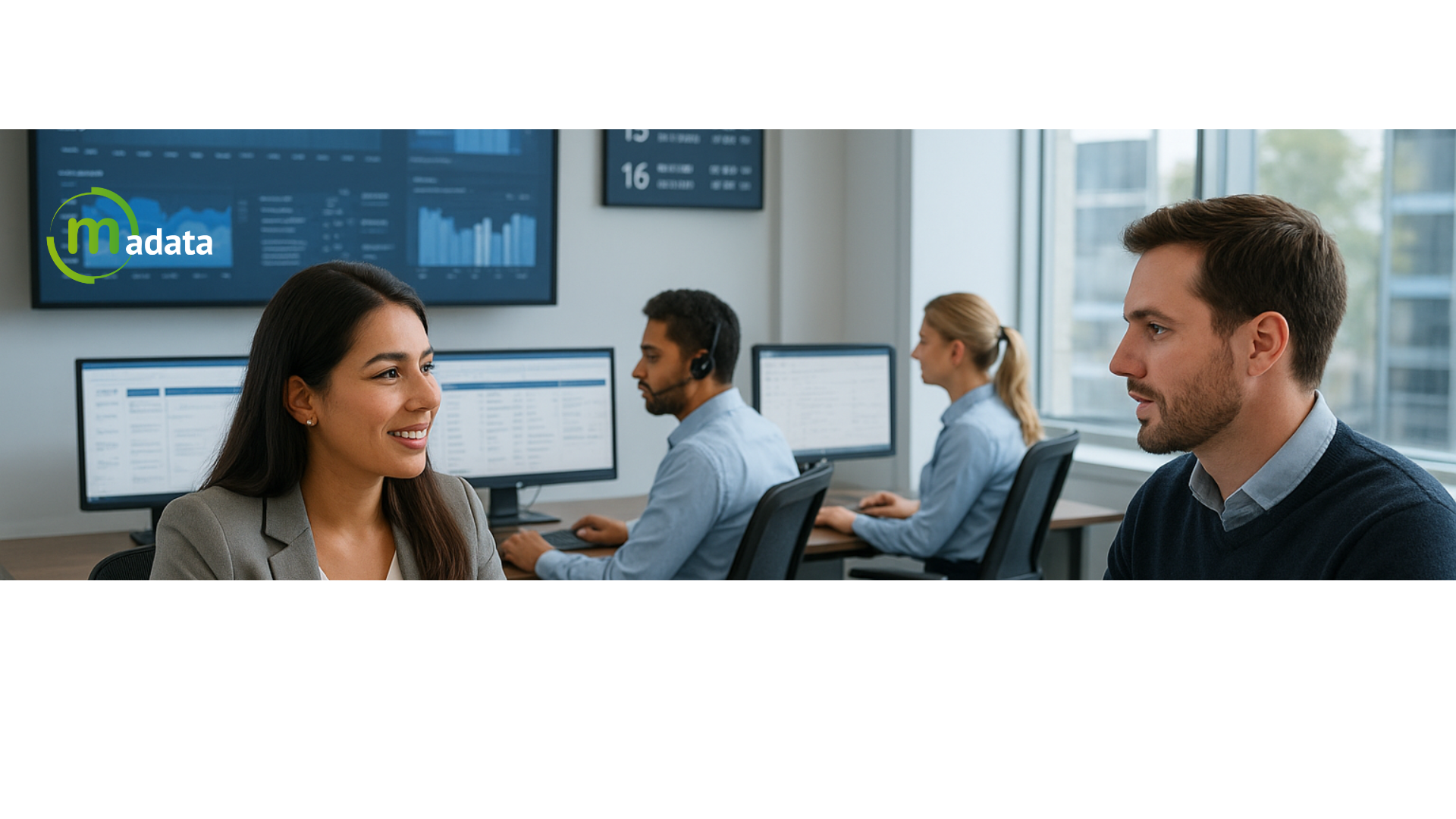Cyber threats are more prevalent and sophisticated than ever. From phishing scams to ransomware attacks, businesses of all sizes face increasing security challenges.
Whether you're running a small business or overseeing a large corporation, protecting your sensitive data and systems is no longer optional — it's essential for survival. Cyberattacks compromise valuable information and can result in significant financial and reputational damage.
If you're wondering where to start, don't worry. This blog breaks down ten practical and proven cybersecurity practices to help your business stay protected. Implementing these strategies will give you peace of mind that your digital assets are safe and your company is well prepared for cybercrime.
1. Enforce Strong Password Policies
Implementing strong password policies across your organization is the simplest and most effective way to strengthen cybersecurity. Weak passwords are one of the leading causes of data breaches, providing cybercriminals with an easy entry point into your systems.
To reduce this risk, require employees to create complex passwords that combine upper and lower case letters, numbers, and special characters. Encourage employees to change their passwords regularly ( every 60 to 90 days.) Avoid reusing passwords across multiple accounts to protect against compromised credential breaches.
By establishing vital password requirements and enforcing them with regular updates, you reduce your organization's vulnerability to cyberattacks.
2. Enable Multi-Factor Authentication (MFA)
Adding an extra layer of security through multi-factor authentication (MFA) can further protect your business. MFA requires users to provide two or more forms of verification. This could be a password and a one-time code sent to their phone before they can access an account or system.
This added security measure ensures the attacker will still be blocked from entering the system, even if they gain access to an employee’s password.
MFA is relatively easy to implement, and many cloud services and applications now offer it as a standard security feature. Some MFA tools include Google Authenticator, Microsoft Authenticator, and Salesforce Authenticator.
This simple yet powerful layer of protection can dramatically reduce the risk of unauthorized access.
3. Keep Software Updated and Implement Patch Management
Using outdated software is a significant security vulnerability. Regularly updating your software and applying patches is one of the best ways to prevent cyberattacks.
Businesses should automate updates whenever possible to ensure systems are constantly up to date. For larger organizations with multiple devices and platforms, a dedicated patch management tool can be used to track and apply security patches on time.
A patch management tool is an application that automates the identification, testing, and application of software updates across your company’s systems. It works by scanning the network for your devices and identifying missing patches.
Keeping all of your systems, including operating systems, applications, and antivirus programs, up to date minimizes the risk of a cyberattack.
4. Conduct Regular Security Audits
Regular security audits are essential to identify and mitigate potential vulnerabilities within your organization. These audits assess the effectiveness of your current cybersecurity measures and highlight areas for improvement.
A thorough audit should review your security protocols, test for vulnerabilities through penetration testing, and ensure compliance with relevant industry regulations such as GDPR, HIPAA, or PCI-DSS. By performing these assessments regularly, you can stay ahead of cybercriminals and address security weaknesses before they are exploited.
Security audits help you maintain a robust defense and ensure your organization meets industry standards.
5. Provide Cyber Security Awareness Training for Employees
Your employees are often the first line of defense against cyber threats. Without proper training, they can become the weakest link in your security chain. Cybersecurity awareness training educates employees on how to recognize and respond to threats like phishing emails, malware, and social engineering attacks.
Training should cover the basics of phishing detection, safe browsing habits, and the importance of strong passwords. Regularly updating this training keeps employees informed about the latest cyber threats and know how to avoid risky behavior. A well-trained workforce can act as a human firewall, protecting your business from threats that might otherwise slip through your technological defenses.
 6. Regularly Backup Your Data
6. Regularly Backup Your Data
Data loss can occur for many reasons. This includes cyberattacks, hardware failure, or accidental deletion. A robust backup strategy is essential to recover your business quickly and effectively during a disaster.
A common approach is to follow the 3-2-1 rule:
- Keep three copies of your data
- Store two on different types of media
- Ensure one copy is off-site or in the cloud.
Automating your backup processes ensures your data is saved without relying on manual intervention. Businesses should also regularly test their backups to verify they can restore data quickly.
By backing up your data regularly, you can minimize downtime and avoid significant financial losses in a cyber-attack or data breach.
7. Secure Your Network with Firewalls and VPNs
Firewalls and Virtual Private Networks (VPNs) protect your systems and secure the transmission of data. A firewall is a barrier between your internal network and the outside world, monitoring incoming/outgoing traffic and blocking suspicious activity.
VPNs should also be used for remote employees or anyone accessing your network from an external location. VPNs encrypt data sent over the internet, keeping sensitive data protected during transmission.
8. Develop an Incident Response Plan
Even the best cybersecurity measures can’t guarantee complete protection against all possible threats. That is why implementing a well-developed incident response plan is beneficial. This plan should detail how your organization will respond to and recover from a cybersecurity breach or attack.
Your response plan should include clear roles and responsibilities for your team, protocols for detecting and reporting incidents, and a communication strategy for notifying relevant stakeholders. After a cyberattack, conduct a post-incident review to identify what went wrong and how future incidents can be prevented.
A proactive incident response plan minimizes damage and speeds recovery after a cyberattack.
9. Use Encryption to Protect Sensitive Data
Encrypting your data ensures it can’t be read or used without the proper decryption key, even if it is intercepted or stolen. Encryption should apply to data at rest (data in storage) and in transit (data being transferred).
To fully protect your sensitive information, implement end-to-end encryption for communications and ensure backup data is also encrypted. Encryption secures sensitive information and helps your business comply with regulatory requirements.
10. Limit Access with Role-Based Controls
Restricting access to sensitive information is another crucial cybersecurity practice. Implementing role-based access controls (RBAC) ensures that employees only have access to the systems and data they need to perform their jobs. This approach, known as the principle of least privilege (POLP), limits the potential damage caused by a compromised account.
Regularly audit access levels to ensure only authorized personnel can access critical systems. When an employee leaves the company or changes roles, their access should be adjusted or revoked immediately. Additionally, reviewing access logs can help identify and respond to unauthorized access attempts.
Limiting access to sensitive information helps prevent internal and external threats, reducing the likelihood of a successful data breach.
 Cybersecurity with Confidence—How Madata Can Help
Cybersecurity with Confidence—How Madata Can Help
Keeping your business secure in today’s digital world is no small task. By following these ten cybersecurity best practices—from solid password policies to encryption and employee training—you’re setting up a robust defense system to protect against even the most determined cybercriminals.
At Madata, we understand that cybersecurity is not just about technology—it’s about creating a culture of airtight security across your entire business. With over 20 years of experience, we’re here to help you implement the right tools and strategies tailored to your company’s needs. From conducting comprehensive security audits to managing encryption and backup systems, Madata is your partner in protecting your business.
Contact Madata today to learn how we can help secure your data, systems, and peace of mind.






%20Ciberseguridad%20en%20los%20Gobiernos%3B%20Un%20gran%20desaf%C3%ADo%20en%20el%202023.jpg)
%20Ciberseguridad%20Personal%20y%20Laboral.jpg)
%20Optimizando%20la%20Seguridad%20en%20la%20Nube_%20Errores%20Comunes%20y%20Soluciones%20Efectivas.jpg)